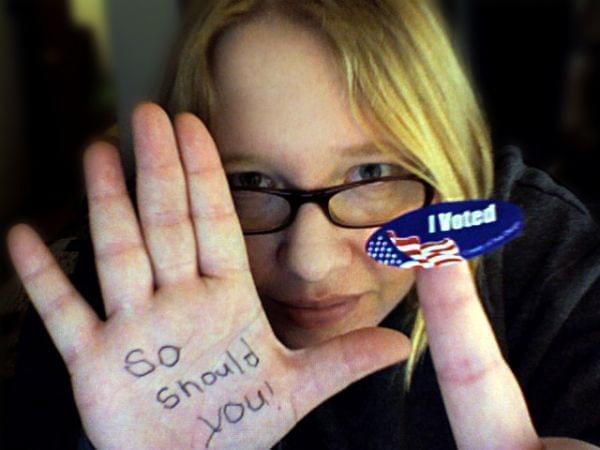Young People Pay Attention to Traditional News and They Want More From Us

Last year, I read a study from Common Sense Media about how young people in the United States perceive and are impacted by news. The results from more than 850 children ages 10 -17 landed on me like a wet candy sucker. Seventy-four percent wanted the news to feature more young people, 69% said news media have no idea about the experiences of people their age, and 63% said the news makes them feel afraid, angry and/or sad, depressed.
There was some encouraging news as well: 48% said following the news is important to them and 50% said the news helps them feel prepared to make a difference in their communities.
How can I make a difference? How can WILL do better to win over young people? With the 2018 mid-term elections approaching, I had an idea. My colleague, Kristin Walters, senior engagement strategist at Illinois Newsroom, and I emailed teachers at high schools in central and southern Illinois. We asked them if we could come into their classrooms to learn directly from students what they needed to be confident voters. Teachers at Murphysboro High School, DuQuoin High School, Springfield Southeast High School, Urbana High School, Arcola High School, Hoopeston Area High School, Eisenhower High School in Decatur and Danville High School welcomed us in.

Before visiting, we surveyed the students about voting and received 409 responses. Survey results combined from all eight schools revealed, among other things: 57% do not know how to register to vote, 84% would like to see their ballot before they vote and 75% said they know how to tell the difference between real and fake news. And most wanted to know how to research candidates beyond candidate websites.
With this preliminary information, we visited these eight classrooms last spring and initiated conversations that started with the big questions facing these students in the coming months and years: What kind of a community do you want to live in? What aspirations do you have? What concerns do you have? Whom do you trust? As the students shared, we connected their answers to electoral politics. For example, when students were concerned about school funding or dress code policies, we talked about the school board as an elected office. When they wanted objective information about candidates, we pointed them to the work we do in public media.

We asked to meet in these same classrooms in the fall to present students with their local ballot, to connect the offices on their ballot to their concerns, to show them examples of local students working for change, and to invite them to shape WILL-TV’s debate with candidates from Illinois’ 13th Congressional District. We were invited back to three of these eight classrooms before the mid-term election. We received more than 60 videotaped questions total from students at Eisenhower High School, Springfield Southeast High School and Urbana High School.

Our editorial team selected one question from a student from each high school to include in our debate. Including student voices in our debate is a step in the right direction for WILL. I will be working more closely with our content teams to ask that more student content be included in our election coverage for 2019 and 2020.
Meanwhile, if you would like WILL’s Education Team to meet with your social studies, civics, government or journalism classes, please send me an email.
Illinois Newsroom’s community and digital engagement efforts are supported with funding from the Robert R. McCormick Foundation. The McCormick Foundation’s mission is to work with communities in Chicagoland and across Illinois to develop educated, informed, and engaged citizens.
